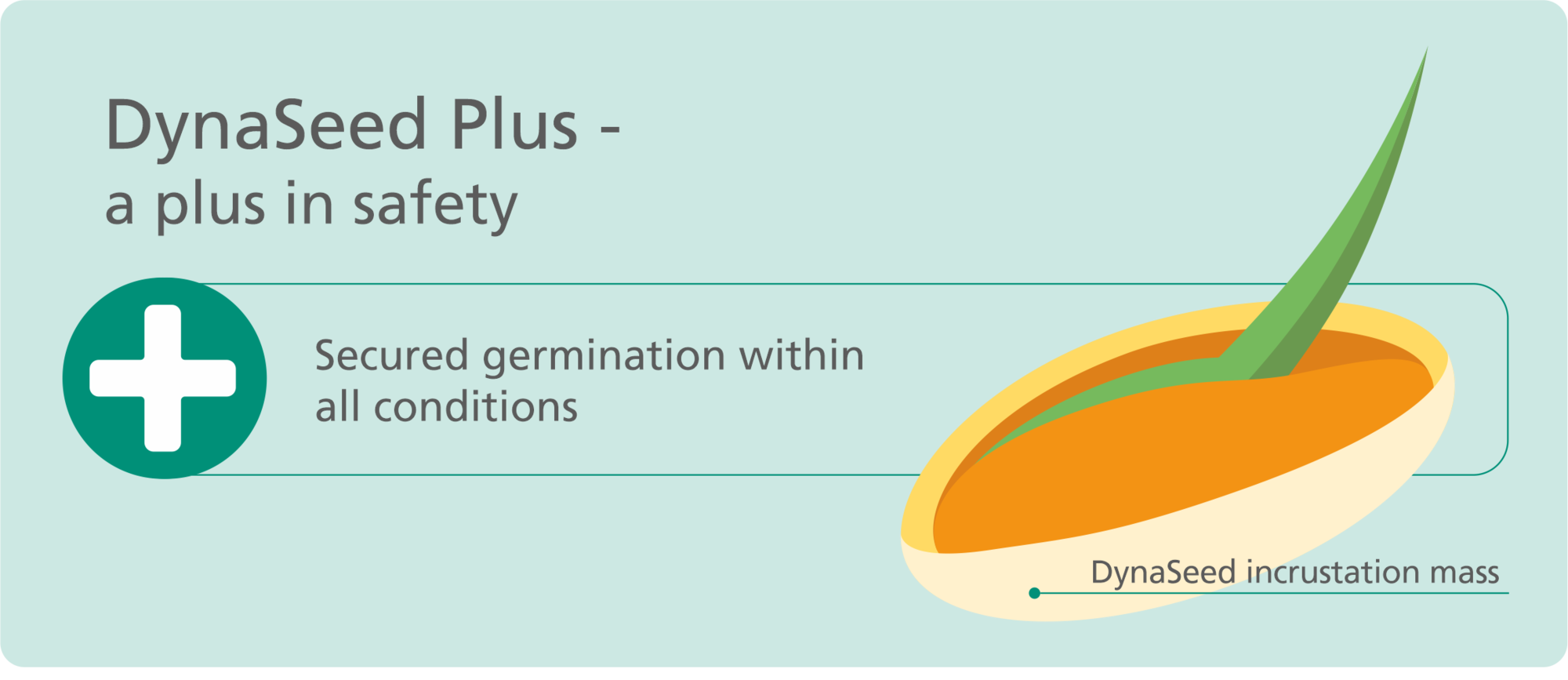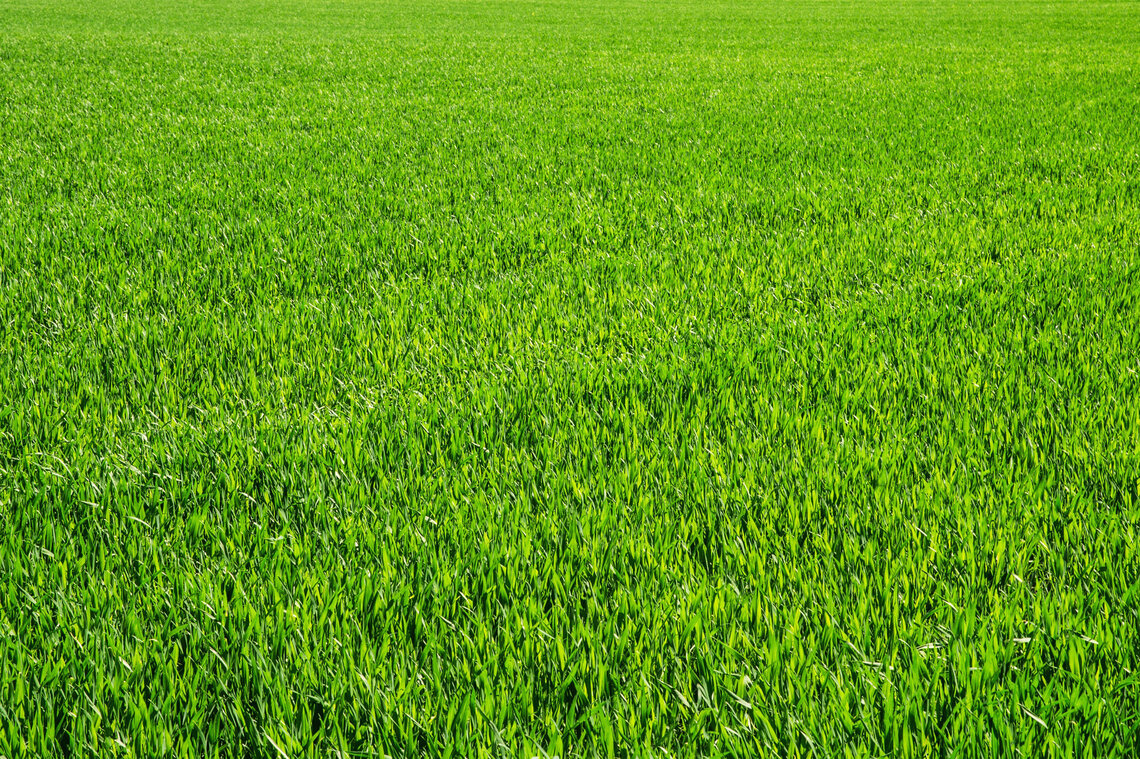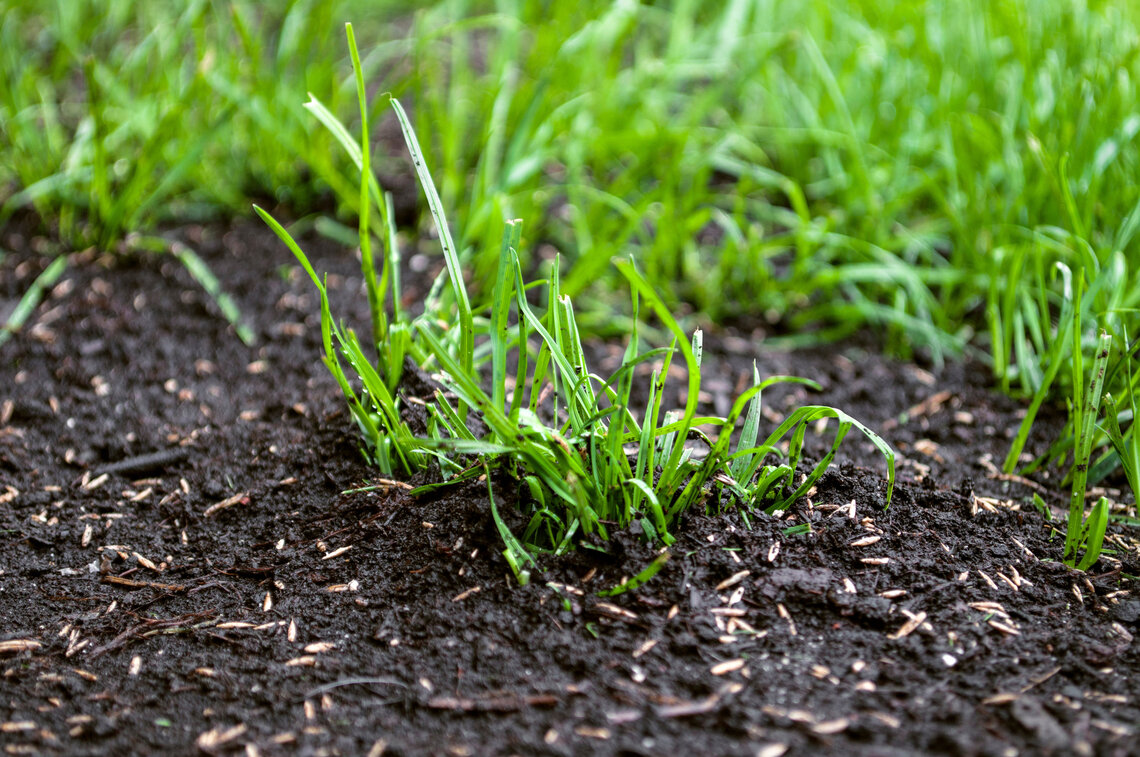EuroGrass Lawn Renovation +


A mixture developed as first-aid kid repair for damaged lawns and for a safe re-greening. The seed is coated with a natural adjuvant that causes faster growth and strong rooting. We operate our own research station for this type of seed treatment. Our research team work to continuously improve the performance of our lawn seeds through the use of ecological coating materials.

EuroGrass lawn seed comes directly from the grass breeder and contains only premium grasses. Biostimulant adheres to the grass seeds in the Lawn Renovation + mixture. It consists of a special recipe of biological additives that optimally nourish the seedling during growth. A lawn seed is very demanding and needs good conditions such as moisture and warmth in order to germinate. Conditions are often not ideal. The enveloping mass that we add to the seed helps the seedling to compensate non-optimal environmental conditions. For you Lawn Renovation+ means a PLUS more security for successful re-seeding.
Overseeding: 25 g/m²
30% perennial ryegrass, hard-wearing variety
25% perennial ryegrass, perennial variety
20% perennial ryegrass, evergreen variety
15% perennial ryegrass, fast-germinating variety
10% annual ryegrass, ensures rapid greening



A new planting is usually carried out when there has been soil movement (new construction areas, conversions) or the condition of the existing lawn is so bad that reseeding is not sufficient. The best time to lay out a new lawn is in spring, from mid-April/May to the end of September, depending on the weather. Optimum germination conditions include a soil temperature of 15-25 °C and mild weather with occasional rainfall. In order for a new system to be successful, the soil on these areas must be carefully prepared.
To do this, the following steps must be taken into account:
![]()
First, the area must be dug up so that existing soil compaction dissolves and a crumbly topsoil is created. The loosening of the soil means that rain and irrigation water seep away better. Finally, plant remains, branches and stones should be removed from the area. Sometimes deep loosening is also necessary before the new installation, e.g. if heavy construction machinery was on the property. Garden specialists who carry out deep loosening mechanically are required here.
![]()
The area must then be leveled. You can use a rake for this. After leveling, the soil needs to settle over a few weeks. If you have a light roller, you can use it to speed up this process a bit. The so-called settling of the soil is very important for the young seeds so that they do not encounter excessively large cavities (soil pores) that hinder growth.
![]()
The seed is sown on the well reconsolidated, finely crumbly and dry soil when there is no wind and no precipitation. You can rake the soil very lightly beforehand. Calculate the amount of seed required for your area. From EuroGrass lawn repair + you need about 25 g/m². Sowing can be done by hand. Either you walk the area as shown in the illustration, or you divide the amount of seed by two and sow once lengthways, then across the area. This improves the evenness. A spreader can be very useful for larger areas.
![]()
After sowing, the seed must be incorporated about 1 cm deep into the soil. This ensures that the seed is covered, promotes germination conditions and enables the seed to emerge quickly and evenly.
![]()
After the seed has been worked in, the soil should be pressed down with a light roller so that the seedling has optimal soil contact and can establish itself through rapid root formation.
![]()
During the first few weeks it is particularly important to keep the top layer of soil moist so that the seedling does not dry out. Due to the different germination times of individual types of lawn, watering should last three to four weeks. If it is very dry, the soil must be watered every day. Make sure that the watering does not wash away the lawn seed. Regular and controlled watering is one of the central measures for a successful new plant.
If your surface has "greened", the first cut should be made at a height of approx. 8 cm. The first cut is particularly important. It takes place at a growth height of around 8 cm at a cutting height of 4-5 cm. With this cut, it is important that the blades of the lawnmower used are very sharp, otherwise the weakly rooted plants can easily be torn out. Adjust the lawn mower so that at least 4-5 cm of the seedlings remain.
![]()
The first step before overseeding your lawn is scarifying. Scarifying removes dead plant parts (felt) and moss from the lawn. If there is a lot of moss or thatch, it is advisable to scarify the lawn several times lengthwise and crosswise. The plant remains that have been worked out must then be removed. It is important that the old lawn is opened up and the re-sown seeds get onto the ground and do not lie on felt or lawn residue. If the ground is uneven, it would be wise to remove excess ground or fill in "holes" now.
![]()
The EuroGrass seed packaging has a practical pouring opening. Open this and sow by hand by walking evenly across the lawn as shown in the illustration and scattering the seed. A spreader is ideal for larger areas, as this allows for particularly even sowing. These can be borrowed from good garden stores.
![]()
Seeds need good ground contact for successful germination. We therefore recommend pressing the seed down with a roller. This allows the seeds to establish themselves better in the stock.
![]()
Within the first few weeks, the root system of the seedlings is poorly developed. During this time, it is particularly important to ensure a regulated water supply. The top layer of soil should always be sufficiently moist so that the lawn seedlings do not dry out. Irrigation is one of the central measures for a successful establishment of overseeding.
![]()
You should wait a little before making the first cut after reseeding, as the young seedlings should first be rooted, otherwise they may be damaged or torn out. The period of the first cut largely depends on the establishment of the reseeding. In general, we recommend mowing the lawn for the first time after about four weeks when it is 8 to 10 cm high. After that, the lawn can be mowed regularly again. Regular mowing is an important part of lawn care. This ensures that the lawn grasses remain upright and form an attractive lawn, i.e. tightness. Regular pruning promotes constant regrowth and thus the increased formation of side shoots of the gas lame. This will make your lawn nice and thick.
![]()
The "rule of thirds" automatically determines when and how often a lawn should be cut. Depending on how the lawn is used and the recommended cutting height, a maximum of 1/3 of the leaf mass should be mowed off. If the cutting height is too low, the grass plant can regenerate more poorly and gaps can form into which unwanted plants can then migrate. In shaded areas, too deep a cut also promotes moss formation.